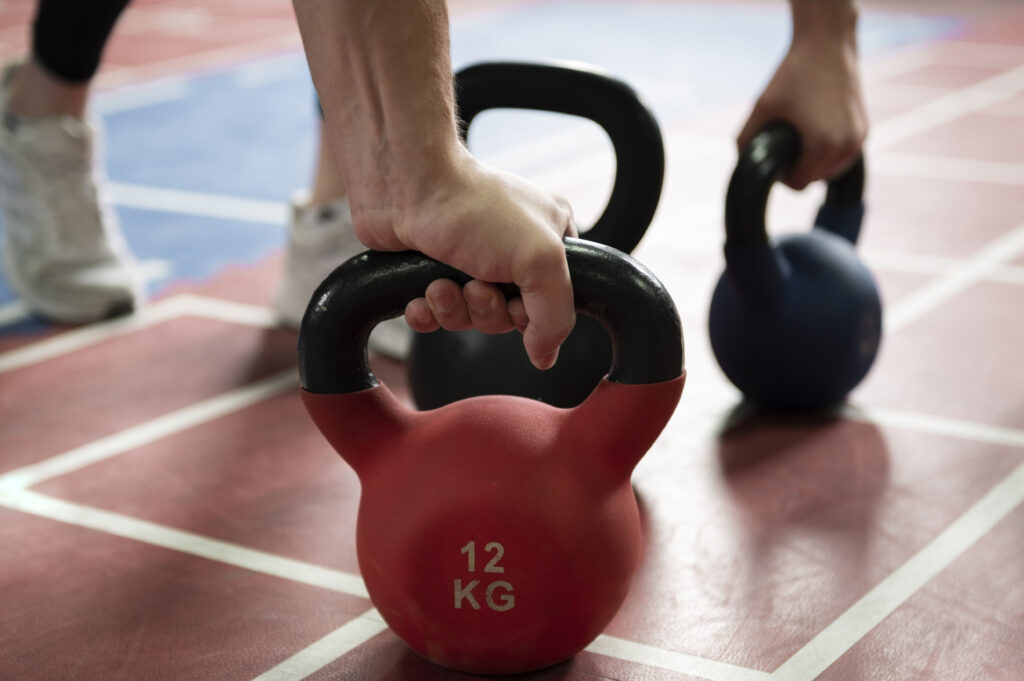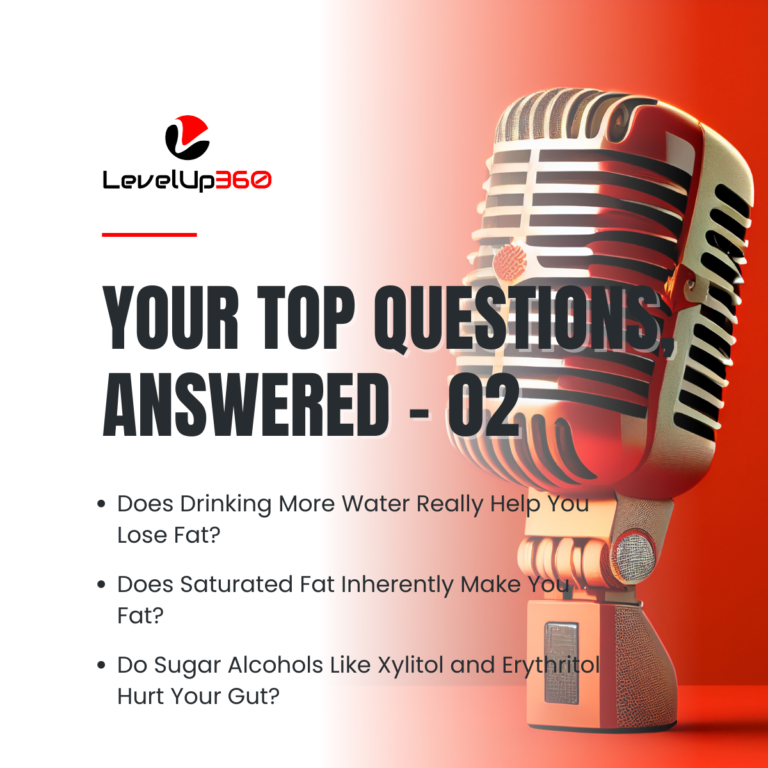
Building Strength Efficiently: The Minimum Effective Dose You Need to Get Stronger
Strength training is a crucial component of any well-rounded fitness program. Not only does it help build a strong, capable body that you can rely on, but it also provides numerous health benefits like improved bone density, better balance and coordination, and enhanced cardiovascular health.
However, many people struggle to fit regular strength training into their busy schedules. The good news is, that you don’t need to spend hours in the gym each week to make meaningful progress. By focusing on the minimum effective dose of training, you can get stronger with a minimal time commitment. This can be applied to different fitness outcomes like gaining strength or promoting muscle hypertrophy.
This article will specifically focus on the minimum effective dose for building strength. There will be a separate article detailing the research on the minimum effective dose for muscular hypertrophy, “Building Muscle Efficiently: The Minimum Effective Dose You Need to Build Muscle Tissue“.
Here we will break down how to get significantly stronger with less total exercise volume.
If you’re a busy professional over age 35, this minimum effective dose approach is especially valuable as it allows you to reap the benefits of strength training without compromising your hectic schedule. Making time for 2-3 short, intense workouts per week can lead to measurable results not just in the gym, but in everyday life – lifting your kids, carrying groceries, and knowing you have a strong, resilient body.
Strength not only does it help build a strong, capable body, but it also provides numerous health benefits like improved bone density, better balance and coordination, and enhanced cardiovascular health
Key Concepts
There are several key training concepts that will be used in this article that are worth defining up-front:
- 1RM – The one-repetition maximum (1RM) is the maximum amount of weight that can be lifted for one complete repetition of a given exercise. It is a measure of an individual’s absolute strength in a particular movement.
- Hard Sets – Sets performed within 2-3 reps of muscular failure.
- Frequency – The number of times per week a muscle/movement is trained.
- Full Body Training – Hitting all major muscle groups in each session.
- Progressive Overload – Gradually increasing weights/intensity over time drives continued progression.
- RIR – RIR or reps in reserve refers to the number of additional repetitions that could have been performed for a given exercise set. For example, you can lift a weight for a maximum of 10 repetitions before failure, but if you stop after 6 reps, you would have 4 RIR (10 max reps – 6 reps completed = 4 reps in reserve).
- Muscular failure – Muscular failure refers to the inability to complete another repetition with proper form due to fatigue in the target muscles. Essentially, the muscles have been sufficiently fatigued that they can no longer produce the required force to lift the weight.
- Technical failure – Technical failure is when a set has to be stopped due to form breakdown, but not due to complete fatigue of the working muscles. For example, the lower back rounds on a deadlift or the knees cave in on a squat before the target muscles have fully fatigued.
Defining Strength and Tracking Progress
Before diving into the specifics of minimum effective dose training, it’s important to have a clear understanding of what strength actually means. Strength can be defined as the maximum force a muscle or muscle group can generate against resistance in one maximal effort. While the big compound lifts like squats, deadlifts, bench press and overhead press are often used as key strength measures, there are additional ways to assess strength:
- Grip strength – measured by a grip dynamometer
- Core strength – plank hold times, bridging holds
- Power – measured through vertical jump height, medicine ball throw distance
- Rate of force development (RFD) – how quickly force can be generated
To track your progress over time, it’s important to regularly test your maximal strength in the main lifts and key accessory exercises. There are also standardised strength scores and estimated 1RM formulas that can be used to compare your results to benchmarks for your age and gender.
Setting clear performance goals and consistently tracking metrics like estimated 1RM, reps at a given percentage of 1RM, and total training volume will help you gauge your strength improvements objectively. Investing in a training journal or app to log your workouts makes this process simple.
Training Variables that Drive Strength

To design an effective minimum dose strength training program, you first need to understand the key training variables that influence strength adaptations. Let’s look at what the research says:
Intensity: Lifting heavy weights is crucial for strength gains. Studies show training with loads above 85% of your 1 rep max (1RM) is most effective for increasing maximal strength. This is because near-maximal loads are required to fully recruit the highest threshold motor units.
Volume: While research shows a clear dose-response relationship between training volume and hypertrophy, the relationship with strength is not as linear. Strength gains can be made with relatively low volumes (e.g. 3-5 sets per exercise) if the intensity is high enough. The key is ensuring total training volume remains sufficient to drive progress.
Exercise Selection: Focusing on compound exercises that recruit large amounts of muscle mass, like squats, deadlifts, presses and rows, is most efficient for strength development. A smaller number of these exercises can be very effective compared to higher volumes of isolation work.
Rest Periods: Longer rest intervals (3-5+ minutes) are typically used for maximal strength training to allow sufficient recovery between bouts of near-maximal lifting. However, rest can be optimised to improve training efficiency, as we’ll see later.
What is the evidence on minimal effective dose training for strength?
The evidence suggests that there is a minimal effective dose response for strength, meaning measurable strength gains can be achieved with lower training volumes if certain factors are properly managed. For example:
- The Lakis et al. pilot study compared a daily max group doing heavy singles to a periodized group. The key takeaway was that heavy singles at 80-90% 1RM 3 days per week led to faster strength gains in 4-7 weeks. This supports low volume and high intensity for strength.
- The Ralston et al. meta-analysis indicated a dose-response for strength, but lower volume still produced significant gains. 1-4 hard sets per muscle per week can increase strength.
- Schoenfeld et al. show strength gains from just 2 sets per exercise when training to failure. Effort again matters when the volume is low.
Thus, several studies have found there are effective minimum doses that can induce strength improvements without necessarily maximizing training volume. The key is to properly incorporate intensity on main lifts and ensure maximal effort on each work set when the overall volume is reduced.
So the emphasis should be on brief, high-quality sessions focused on the main lifts at high intensities of 80%-100% 1RM and taking sets to muscular failure or very close to it to ensure maximum effort rather than volume when applying a minimal dose approach to optimize strength.
Minimum Effective Dose Program Outline
Now that we’ve covered the key training variables, let’s outline what a minimum effective dose strength training program might look like:
Program Structure: A full body workout performed 2-3 times per week, or an upper/lower split performed 4 times per week, can be very effective for strength gains. The key is ensuring each major muscle group gets trained with sufficient intensity and volume.
Volume: Aim for 3-5 working sets per exercise, with the majority of work being done in the 4-6 rep range. This allows you to maintain high intensity while accruing enough total volume.
Intensity: Load should be at or above 80% of 1RM for most working sets. This means the last rep of each set should be near-maximal effort.
Rest Periods: 2-3 minutes of rest between sets is a good starting point to allow recovery while keeping workouts efficient. Rest periods can be adjusted based on individual recovery needs and time constraints.
Exercise Selection: Cantering your workouts around the core compound lifts is most effective for strength:
• Squats (Back, Front, Goblet)
• Deadlifts (Conventional, Sumo, Romanian)
• Bench Press (Barbell, Dumbbell)
• Overhead Press (Barbell, Dumbbell)
• Rows (Barbell, Cable)
• Pull-ups/Chin-ups
Progress these lifts slowly over time, adding weight or reps each week.
Additional Considerations
Proper Technique: Maintaining good form is critical to maximise strength gains and prevent injury. Focus on creating total body tension, bracing your core, and controlling the weight through a full range of motion on each rep. If you’re new to lifting, investing in a few sessions with a qualified coach can be very beneficial for learning proper technique.
Warm-ups: Always start your workouts with a general warm-up to elevate your core temperature and lubricate your joints. Before your work sets, perform a few explosive reps with light weights to prime your nervous system for heavy lifting.
Progression: Aim to increase the load lifted or total reps performed each week. Small increments like 2.5-5lbs per lift or 1 extra rep per set add up substantially over time.
Deloads: Taking a week to lower the intensity and volume of your training every 4-6 weeks can help with recovery and prevent overtraining. During a deload, reduce weights used by 10-20% and cut your volume by about a third.
Putting it All Together - Sample Minimum Effective Dose Strength Program

2-day full body program:
Here’s what a bare-bones, minimum effective dose strength program might look like using 2 full body workouts per week:
Day 1:
- Squat – 3×5 at 85% 1RM
- Bench Press – 3×5 at 85% 1RM
- Barbell Row – 3×5 at 85% 1RM
Day 2:
- Deadlift – 3×3 at 90% 1RM
- Overhead Press – 3×5 at 85% 1RM
- Pull-ups – 3 sets to failure
3-day full body program:
Here’s what a bare-bones, minimum effective dose strength program might look like using 3 full body workouts per week:
Day 1:
- Squat – 1 set x 0-2 RIR (to technical failure or 1-2 reps shy) + 2 sets x 3 reps at 80% 1RM
- Bench Press – 1 set x 0-2 RIR (to technical failure or 1-2 reps shy) + 2 sets x 3 reps at 80% 1RM
Day 2:
- Bench Press – 1 set x 0-2 RIR (to technical failure or 1-2 reps shy) + 2 sets x 3 reps at 80% 1RM
- Deadlift – 1 set x 0-2 RIR (to technical failure or 1-2 reps shy) + 2 sets x 3 reps at 80% 1RM
Day 3:
- Squat – 1 set x 0-2 RIR (to technical failure or 1-2 reps shy) + 2 sets x 3 reps at 80% 1RM
- Pull-ups – 3 sets to failure
Perform each workout once per week with at least a day of rest between them. Start light and add 1-2.5kg to each lift weekly (note that the stronger you get the more difficult it becomes to keep adding weight to the bar, and you will then be able to add weight to the bar every few weeks rather than every week). Deload by reducing load by 10-20% every 4-6 weeks.
This basic template ensures you’re hitting each major lift at least once per week with enough intensity and volume to drive strength gains. You can add accessory exercises as needed and modify them based on your schedule, but this is the core structure to build around.
Conclusion
Strength training doesn’t have to be complicated or time-consuming to be effective. By focusing on a few key compound lifts and ensuring you’re training with enough intensity, you can make substantial strength progress in just a few short workouts per week.
The key principles covered here – proper technique, progressive overload, and adequate rest and recovery – will allow you to implement this streamlined approach and experience the rewards of getting stronger in the most efficient way possible. So don’t be afraid to simplify your training and trust the process – sometimes less truly is more when it comes to making sustainable lasting strength gains.
Recommended reading
Recommended reading
Additional Resources
Feeling in control of your health
If you are interested in improving your health and wellness, check out other resources such as Our Blog, Free Resources and/or join our private Body-Mind Transformation Secrets Community on Facebook, and go on an even deeper dive with me to uncover how to succeed in your health and wellness goals.
You may also be interested in our Sleep Secrets Cheat Sheet. It is a great resource with strategies to fix and optimize your sleep which is crucial to succeeding in your health and wellness goals.
Resources
Pictures








